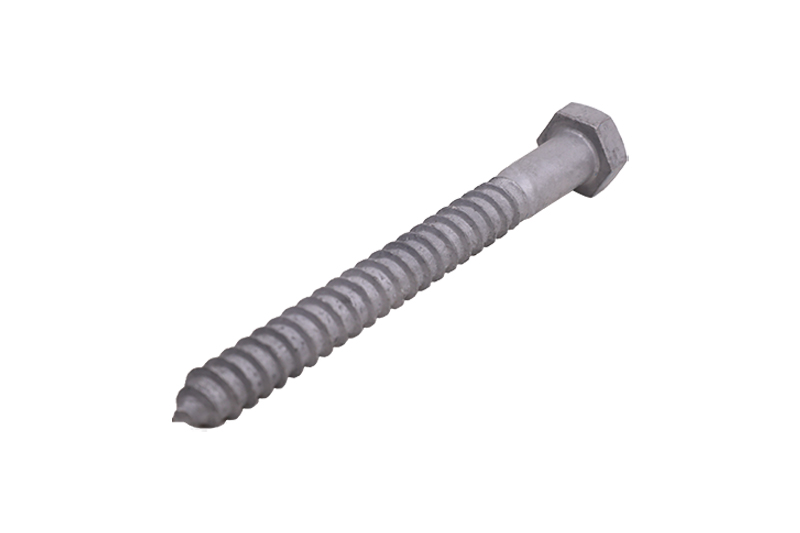1. Blackening (bluing) Put the fasteners to be blackene […]
1. Blackening (bluing) Put the fasteners to be blackened in the sodium hydroxide (NaOH) and sodium nitrite (NaNO2) oxidants in the solution tank (145±5℃) to heat and oxidize to make the metal tight A layer of ferroferric oxide (Fe3O4) film with magnetism is formed on the surface of the firmware, and the thickness is generally 0.6-0.8μm, which is black or blue-black. Fasteners for pressure vessels HG/20613-2009 and HG/T20634-2009 standards require bluing treatment.
2. Phosphating Phosphating is a process of forming a phosphate chemical conversion film by chemical and electrochemical reactions. The phosphate conversion film formed is called a phosphate film. The main purpose of phosphating is: to provide protection to the base metal and prevent the metal from being corroded to a certain extent; for primer before painting to improve the adhesion and anti-corrosion ability of the paint film layer; to reduce friction in the metal cold working process Use for lubrication. The standard for large-diameter double-ended studs for pressure vessels requires phosphating treatment.
3. Hot-dip galvanizing Hot-dip galvanizing is to immerse the derusted steel components in a molten zinc solution at a high temperature of about 600℃, so that the surface of the steel components is attached with a zinc layer. The thickness of the zinc layer should not be less than 65μm for a thin plate below 5mm, and a thickness of 5mm and above. The board is not smaller than 86μm. So as to play the purpose of anti-corrosion.
4. Dacromet Dacromet is the transliteration and abbreviation of DACROMET, abbreviated as Dacromet, Dacromet, and Dirkron. Named as zinc-chromium coating in China, it is a new type of anti-corrosion coating with zinc powder, aluminum powder, chromic acid and deionized water as the main components. There is no hydrogen embrittlement problem, and the torque-preload consistency performance is very good. If the environmental issues of hexavalent chromium are not considered, it is actually the most suitable for high-strength fasteners with high anti-corrosion requirements.
5. Electro-galvanizing Electro-galvanizing, also known as cold galvanizing in the industry, is the process of using electrolysis to form a uniform, dense, and well-bonded metal or alloy deposition layer on the surface of the part. Compared with other metals, zinc is a relatively cheap and easily plated metal. It is a low-value anti-corrosion electroplating layer and is widely used to protect steel parts, especially to prevent atmospheric corrosion, and for decoration. Plating technology includes slot plating (or rack plating), barrel plating (suitable for small parts), blue plating, automatic plating and continuous plating (suitable for wire and strip). Electro-galvanizing is the most commonly used coating for commercial fasteners. It is cheaper and looks good, and it can come in black or army green. However, its anti-corrosion performance is general, and its anti-corrosion performance is the lowest among zinc plating (coating) layers. Generally, the neutral salt spray test of electrogalvanization is within 72 hours, and some special sealants are used to make the neutral salt spray test more than 200 hours, but the price is expensive, which is 5-8 times that of general galvanizing. Fasteners for structural parts generally include color zinc and white zinc, such as commercial grade bolts such as 8.8.
6. Chrome plating Chrome plating is mainly to improve the surface hardness, beauty and rust prevention. The chromium plating layer has good chemical stability and has no effect in alkali, sulfide, nitric acid and most organic acids, but it can be dissolved in hydrohalic acid (such as hydrochloric acid) and hot sulfuric acid. Because chromium does not change color, it can maintain its reflection ability for a long time when used, which is better than silver and nickel.
7. Nickel plating Nickel plating is mainly wear-resistant, anti-corrosion, anti-rust, and generally thinner processes are divided into two types: electroplating and chemical.
8. The principle of sherardizing powder sherardizing technology is that the sherardizer and steel parts are placed in a sherardizing furnace, heated to about 400 ℃, and the active zinc atoms penetrate into the steel parts from the surface to the inside. At the same time, the iron atoms diffuse from the inside to the outside, which forms the zinc-iron intermetallic compound on the surface of the steel part, that is, the galvanized layer.
